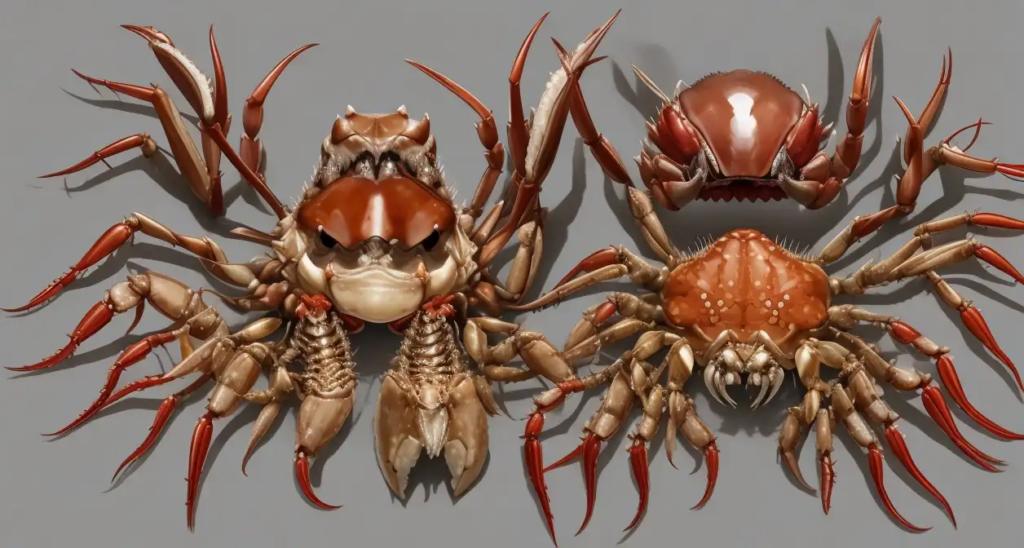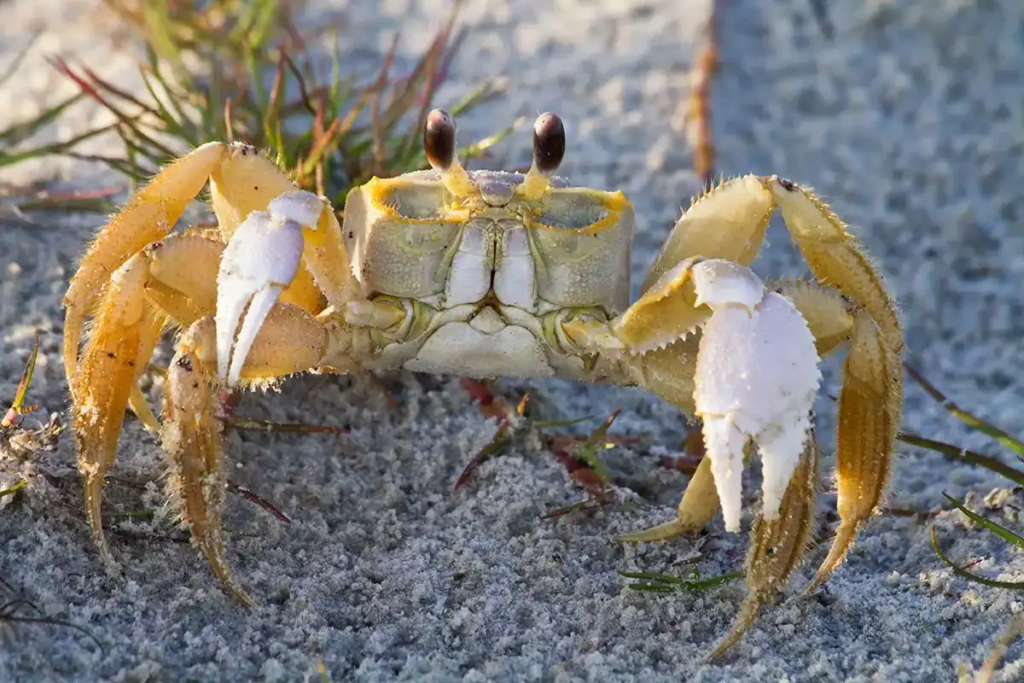Introduction
Crabs are widespread crustaceans that inhabit the oceans and coastlines of every continent. Their distinct body shape and lateral movement make them easily identifiable. But have you ever considered their mouths and how they consume?
The mouths of crabs have evolved into intricate structures that are specialized for acquiring and ingesting fresh food. Understanding crab mouths’ anatomy and feeding mechanisms reveals intriguing biological facts about these creatures.

What are crab mouths?
The mandibles, maxillae, and maxillipeds of a crab are optimized for specific foraging strategies. Their openings are located between their legs on the ventral side of their bodies.
The buccal cavity is a chamber within the mouth that is lined with hairlike structures for manipulating food. Muscles regulate the movements of crabs’ mouthparts, allowing them to process and consume food efficiently.
Overview of crab mouth anatomy
There are three pairs of appendages in the mouths of crabs: mandibles for crushing, maxillae for tasting and manipulation, and maxillipeds for filtration.
Diet influences the orientation, morphology, and function of these structures among crab species. Crabs have two pairs of sensory palps near their mouths that help them identify and manipulate food particles.
Crab Mouth Structures
There are three primary pairs of appendages that make up the mouth of a crab:
Mandibles
For crunching and grinding food, the mandibles, or jaws, are widely calcified. They crush food against a ridged molar process by moving sideways. Mandibles are propelled by robust adductor muscles and can exert significant force.
Maxillae
Maxillae are more delicate and have taste and manipulation setae. They provide sustenance for the maxillipeds and help separate organic matter from sediments. Maxillae have filaments that help to identify food sources by detecting chemicals.
Maxillipeds
Maxillipeds are modified legs that are optimally suited for accumulating and filtering food particles. They generate water currents that capture and transport particles to the mouth. In some crustaceans, maxillipeds take the form of feathery branches that are efficient at straining plankton.

Feeding Mechanisms
Crabs employ three primary feeding mechanisms, depending on their diet:
Scraping
Crabs such as rock and spider crabs use comb-like setae on their mandibles to scrape food off of unyielding surfaces. They scrape against substrates in order to dislodge algae, plants, and debris. As they forage for food, distinctive scrape markings are left behind.
Crushing
Mandibles of crabs with molar surfaces are specialized for pulverizing shelled prey such as clams, snails, and barnacles.
They exert concentrated force to crack open protective shells and gain access to the delicate tissues within. Their formidable mandibles function as nutcrackers, penetrating the exoskeleton.
Filter feeding
Blue crabs pump water through their maxillipeds in order to capture plankton and organic debris from the water column. Their fan-shaped branches filter suspended food from the flowing water and convey it to the mouth. This grazing strategy is effective in estuaries.
Unique Adaptations
Specific crab species have evolved modified mouthparts and tactics tailored to their ecological niches:
Fiddler crabs
Fiddler crabs live in burrows and use one oversized claw to shovel sediment into their mouths. This brings organic matter to their mandibles and maxillae, which extract food. Their mouths angle downward to facilitate substrate feeding.
Mud crabs
The spoon-tipped maxillipeds of mud crabs are used as conveyor belts to transport nutrients from mudflats to their jaws. Their mandibles generate suction that drags mineralized water and debris into their mouths.
King crabs
King crabs have mouths framed by specialized maxillipeds that transfer bits of meat, dead animals, and debris into the buccal cavity. Their mandibles then grind up this material trapped against spines on the molar surface.
Summary
The mouths of crabs are intricate structures with paired appendages designed for specific foraging strategies. Maxillae manipulate and sense, mandibles pulverize and grind, and maxillipeds collect particles.
Feeding mechanisms such as scraping, crushing, and filtering enable crabs to flourish in a variety of environments. Adaptations facilitate substrate nutrition, plankton capture, and food mastication. The mouthparts of crabs are an exquisite example of form meeting function.
Importance of crab mouths
Examining the extraordinary variety and ingenuity of crab mouthparts reveals insights into the evolution of adaptations. Crabs can inhabit seabeds, estuaries, reefs, and other aquatic ecosystems because of their specialized mandibles, maxillae, and maxillipeds.
Crab species inhabiting the same locations are separated ecologically by their distinct feeding strategies. The study of crab mouthparts can also inspire the development of novel underwater food collection devices.
The complexity and functionality of crab mouths demonstrate their evolutionary success.
Frequently Asked Questions
How many parts make up a crab’s mouth?
A crab’s mouth comprises three pairs of appendages: two mandibles, two maxillae, and two maxillipeds. These mouthparts work together to capture and process food.
What is the crab’s buccal cavity?
The buccal cavity is the enclosed compartment behind the mouth where food is ingested and processed. It contains chewing and filtering structures and allows the intake of water for filter feeding.
Which mouthparts grind up food?
The mandibles, or jaws, perform chewing and crushing functions in a crab’s mouth. They have molar surfaces specialized for grinding and macerating food particles.
How do crabs that filter their feed trap plankton?
Filter feeding crabs use their feathery maxillipeds to create currents that catch and transport plankton into the mouth. The fine hairs sieve food from the water.
What allows crabs to identify and sort food?
Sensory hairs called setae on the maxillae detect chemicals and textures that help crabs identify food for ingestion. Maxillae manipulate and sort food particles.
Which crabs scrape with specialized mandibles?
Crabs like rock crabs and spider crabs have mandibles with rows of comb-like setae ideal for scraping food off hard surfaces as they forage.
